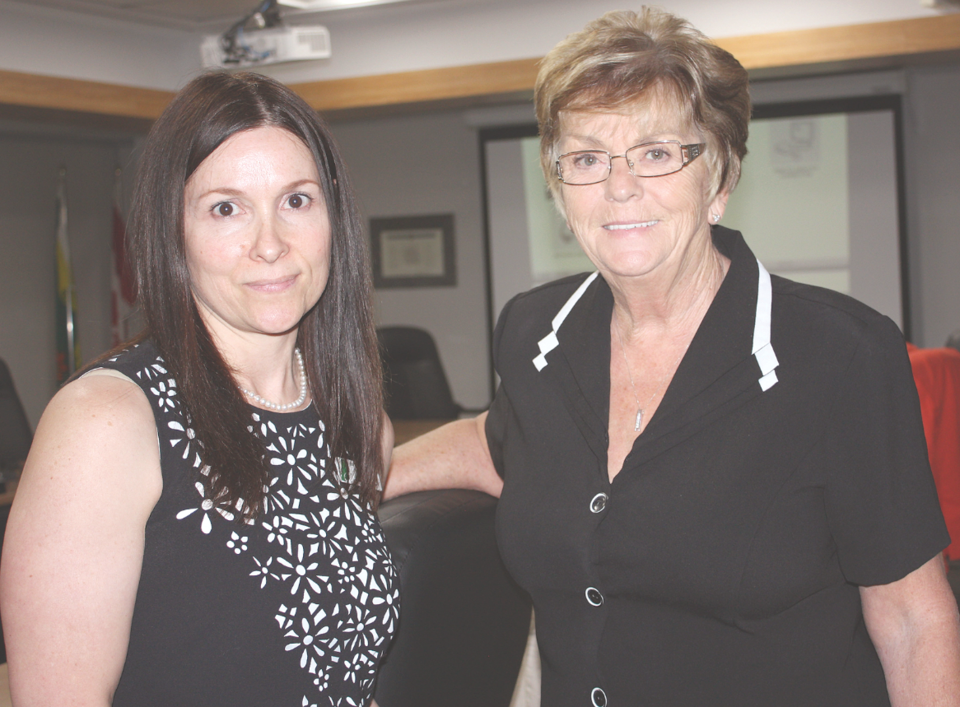The multi-pronged approach towards providing valuable early learning programs of intervention and sustainability, using available materials and resources, was outlined in detail by the program’s co-ordinator at a recent South East Cornerstone Public School Division meeting on May 16.
Jacquelene Gibbs, a former consultant within the group, who is now the co-ordinator, taking over following the retirement of former co-ordinator Sandy Klatt, said caseloads are building in number and frequency.
She also named the people who are engaged in the programs and projects that include not only home and classroom consultations and activities, but also a whole lot of data gathering that assists the various professionals in delivering efficient programs to youngsters who are pre-school, pre-kindergarten and kindergarten bound.
The plan is to have 90 per cent of the students exiting kindergarten scoring in an appropriate range in four of five domains, one of which must be the language and communication domain, she explained.
Monitoring and assistance is offered up to and beyond Grade 3 levels on the reading and writing scopes.
The team members include elementary curriculum consultants, speech/language pathologists, early learning consultants and a KidsFirst community liaison person.
Beginning with caseload numbers and moving on to such things as assessment, evaluations and programming, Gibbs gave the board members a series of charts to view that illustrated the progress being made on various fronts and explained how she arrived at a benchmark in the local system to assist with the evaluation process that affects future programming and projects.
There are 133 pre-school children currently engaged in the early learning program along with their parents. Referrals to the program are usually made by health care professionals (50 per cent) she said, or from schools and parents themselves. She also described how an original visitation to a home is carried out.
She said that usually includes Gibbs herself along with a consultant and “a bag of toys,” so that while the child plays, the parents can be interviewed and a growth and development plan can start to take form once the background information is provided.
There are two to four home visits per month after that with play “infused with purposeful action and teaching.” She went on to note that this element of the program is successful enough that “some meet the objectives early and transition out once they enter the school system.” Others will continue to receive additional assistance through pre-kindergarten and kindergarten.
The collection of baseline data is important, Gibbs told the trustees, and that data base will have a substantial addition next month as a whole year’s worth will be coming online thanks to the hard work of the consultancy team.
“We needed comparisons to see if they are missing milestones reached by other children of the same age,” Gibbs said.
Early indications were promising, she said, since the youngsters with intervention programs to help them were advancing at an even more rapid clip than the children without the intervention. That meant, she said, “the kids who needed the help are, in fact, catching up.”
She also praised the parents for getting behind the program, especially when they saw how effective it was.
The KidsFirst project, a relatively new addition, involves community liaisons such as attendance at baby showers, parenting programs, fetal alcohol syndrome prevention events, car seat clinics, newcomer events and use of a community mobile service when it becomes available.
The Pop Up Play Group was one such project that Gibbs said is working very well and engages both parent and child with building creativity as well as language and cognitive skills. She said they are learning what resources are available for this program in each community served by Cornerstone, and early results are most promising since parents and children are easily engaged in the process.
Gibbs fielded questions from the board members during her presentation.
At the conclusion, board member Harold Laich made the observation that “one thing more than any other that parents want, is hope for their kids. You bring them that.”
“We are blessed in this school division to have this program here. Not all systems have this in their realm,” said Lynn Little, the division’s director of education.



